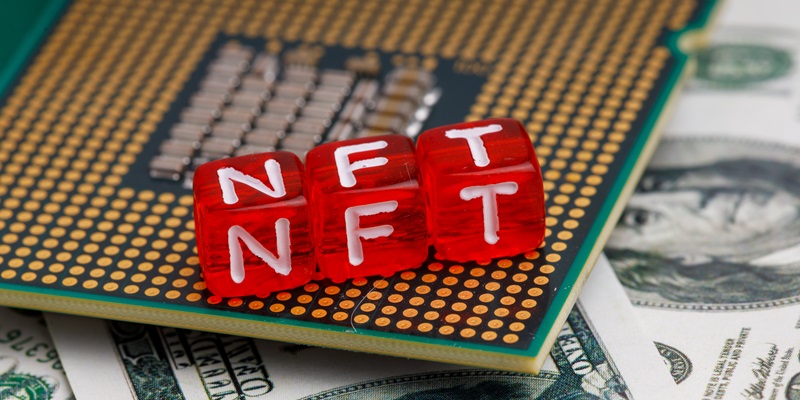In recent years, the rise of non-fungible tokens (NFTs) has brought immense excitement and innovation to the digital art and collectibles space. However, the scalability challenges faced by NFT platforms have become increasingly apparent. As the popularity of NFTs continues to grow, the Ethereum network, the primary platform for NFTs, has struggled to keep up with the increasing demand. This is where Polygon, an Ethereum Layer 2 scaling solution, emerges as a beacon of hope.
The Benefits of Migrating to Polygon
One of the key advantages of Polygon is that it allows projects and developers to seamlessly migrate from Ethereum without compromising the security and decentralization offered by the Ethereum network. This means that NFT platforms can enjoy the benefits of Polygon’s scalability without sacrificing the trust and robustness of the underlying blockchain.
Transitioning From a Proof-of-work to a Proof-of-stake Mechanism for Sustainability
Polygon employs a proof-of-stake (PoS) consensus mechanism, which is a departure from Ethereum’s energy-intensive proof-of-work mechanism. This transition to PoS aligns with the global push towards more sustainable and eco-friendly blockchain solutions. By reducing energy consumption, Polygon enables NFT platforms to contribute to a greener future while still maintaining the integrity of the network.
Collaborating for a Greener Blockchain Ecosystem
Polygon actively collaborates with projects that share its vision for a greener blockchain ecosystem. By fostering partnerships and encouraging sustainable practices, Polygon aims to lead the way in creating a more environmentally friendly blockchain industry. This collaboration not only benefits NFT platforms but also promotes responsible blockchain development as a whole.
Support for More Sustainable and Eco-friendly Blockchain Solutions
With its transition to a PoS consensus mechanism, Polygon sets an example for other platforms to follow in adopting sustainable practices. By reducing energy consumption and carbon emissions, Polygon contributes to a more eco-friendly blockchain ecosystem. This support for sustainability aligns with the growing societal awareness and demand for responsible and energy-efficient technology.
How Polygon’s Scalability Benefits NFT Marketplaces
Scalability is a crucial factor in the widespread adoption of NFTs, as the Ethereum network has struggled to handle the increasing number of transactions. Fortunately, Polygon’s layer 2 scaling solution provides a remedy. By leveraging sidechains and a network of validators, Polygon significantly improves scalability, ensuring smooth and cost-effective transactions even during peak periods of activity.
Smooth and Cost-effective Transactions, Even During Peak Activity
With reduced transaction costs, creators can mint and sell NFTs without the financial burden of exorbitant gas fees that are common on Ethereum. This cost-effectiveness makes NFTs more accessible to a broader audience and encourages greater participation in the ecosystem. Artists and collectors can transact seamlessly, enhancing the overall growth and prosperity of the NFT market.
Reducing the Financial Burden for NFT Creators
One of the major barriers faced by NFT creators on the Ethereum network is the high gas fees associated with minting and selling NFTs. However, with the migration to Polygon, this financial burden is significantly reduced, making it more feasible for artists and creators to participate in the NFT space. This reduction in costs helps level the playing field and empowers artists to explore new possibilities within the digital art and collectibles realm.
Mitigating the Burden of High Gas Fees
By providing a cost-effective alternative, Polygon alleviates the burden of exorbitant gas fees that have plagued the Ethereum network. This not only benefits individual creators but also supports the growth and sustainability of NFT platforms as a whole. With lower transaction costs, artists can focus on their creative endeavors, attracting more talent and innovation within the NFT ecosystem.
Improved Latency and Confirmation Times Through Network Architecture
The network architecture of Polygon plays a vital role in improving the overall user experience of NFT platforms. By leveraging sidechains, Polygon reduces latency and confirmation times, making transactions faster and more efficient. This enhancement ensures that users can interact with NFT marketplaces seamlessly, providing a smoother and more enjoyable experience for both creators and collectors.
Overall Enhancement of the User Experience
Beyond reducing latency and confirmation times, Polygon’s scalability and cost-effectiveness contribute to an overall improvement in the user experience. NFT platforms built on Polygon can handle increased traffic and demand, ensuring users can easily navigate the marketplace without any performance issues. This enhanced experience fosters user satisfaction and encourages continued engagement within the NFT ecosystem.
Interoperability and the Future of NFTs
Polygon’s interoperability with the Ethereum network positions it as a driving force in shaping the future of NFTs. The ability to seamlessly transfer assets between Polygon and Ethereum opens up a realm of possibilities for cross-chain NFT experiences. This interoperability strengthens the overall ecosystem, allowing for a broader range of assets and trading opportunities.
Potential for Cross-chain NFT Experiences
The synergies between Polygon and Ethereum pave the way for cross-chain NFT experiences, where assets can be seamlessly moved and traded across different blockchains. This interoperability breaks down barriers and expands the reach of NFTs, facilitating greater creativity, collaboration, and liquidity within the space. As the NFT market continues to evolve, the potential for cross-chain interactions will be key to driving innovation and growth.
Polygon’s emergence as an Ethereum Layer 2 scaling solution brings hope to the scalability challenges faced by NFT platforms. Its seamless migration process, combined with the transition to a more sustainable Proof of Stake (PoS) consensus mechanism, addresses the demand for scalability while prioritizing environmental responsibility. By actively collaborating with projects and promoting sustainability, Polygon sets an example for the blockchain industry. With improved scalability, reduced transaction costs, and an enhanced overall user experience, Polygon propels the NFT ecosystem forward. Its interoperability with Ethereum lays the foundation for cross-chain NFT experiences, ensuring a seamless and prosperous future for NFT platforms and their participants.

